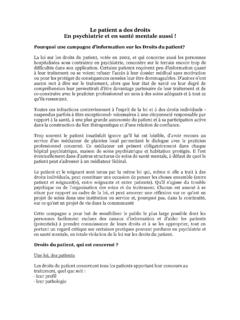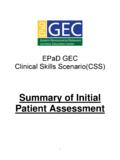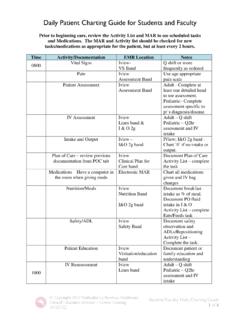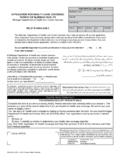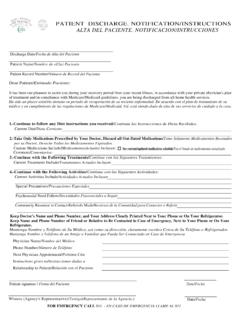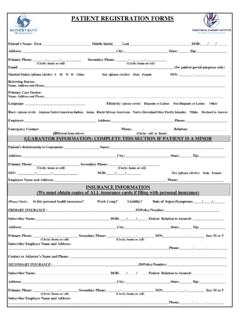Transcription of PATIENT INFORMATION NINLARO
1 Page 22 of 24 PATIENT INFORMATION NINLARO (nin-LAR-oh) (ixazomib) capsules NINLARO is used with two other prescription medicines called REVLIMID (lenalidomide) and dexamethasone. Read the Medication Guide that comes with REVLIMID (lenalidomide). You can ask your healthcare provider or pharmacist for INFORMATION about dexamethasone. What is NINLARO ? NINLARO is a prescription medicine used to treat multiple myeloma in combination with the medicines REVLIMID (lenalidomide) and dexamethasone, in people who have received at least one prior treatment for their multiple myeloma. It is not known if NINLARO is safe and effective in children. Before taking NINLARO , tell your healthcare provider about all of your medical conditions, including if you: have liver problems have kidney problems or are on dialysis are pregnant or plan to become pregnant. NINLARO can harm your unborn baby.
2 O Avoid becoming pregnant during treatment with NINLARO . o Females who are able to become pregnant must use effective birth control during treatment and for 90 days after your final dose of NINLARO . If using hormonal contraceptives (for example, the pill), an additional barrier method of contraception (for example, diaphragm or condom) must be used. o Males with a female partner who is able to become pregnant must use effective birth control during treatment and for 90 days after your final dose of NINLARO . o Talk to your healthcare provider about birth control methods that may be right for you. o Tell your healthcare provider right away if you or your partner become pregnant while you are receiving NINLARO . are breastfeeding or plan to breastfeed. It is not known if NINLARO passes into breast milk, if it affects an infant who is breastfed, or breast milk production.
3 Do not breastfeed during treatment with NINLARO and for 90 days after your final dose of NINLARO . Tell your healthcare provider about all the medicines you take, including prescription and over-the-counter medicines, vitamins, and herbal supplements. Talk to your healthcare provider before starting any new medicines during treatment with NINLARO . How should I take NINLARO ? Take NINLARO exactly as your healthcare provider tells you to take it. Do not change your dose or stop taking NINLARO without talking to your healthcare provider first. NINLARO is taken in cycles. Each cycle lasts 4 weeks (28 days). o The usual dose of NINLARO is 1 capsule taken 1 time each week, on the same day of the week for the first 3 weeks of each cycle. o Take each dose of NINLARO at about the same time of day. o Take REVLIMID (lenalidomide) and dexamethasone exactly as your healthcare provider tells you to.
4 O Your healthcare provider will do blood tests during treatment with NINLARO to check for side effects. o Your healthcare provider may change your dose or stop NINLARO , REVLIMID (lenalidomide), or dexamethasone if you have side effects. Take NINLARO at least 1 hour before or at least 2 hours after food. On the days that you take both NINLARO and dexamethasone, do not take NINLARO and dexamethasone at the same time. Take dexamethasone with food. Swallow NINLARO capsules whole with water. Do not crush, chew or open the capsule. Avoid direct contact with the capsule contents. If you accidentally get powder from the NINLARO capsule on your skin, wash the area well with soap and water. If you accidentally get powder from the NINLARO capsule in your eyes, flush your eyes well with water. If you miss a dose of NINLARO , or if you are late taking a dose, take the dose as long as the next scheduled dose is more than 3 days (72 hours) away.
5 Do not take a missed dose of NINLARO if it is within 3 days (72 hours) of your next scheduled dose. If you vomit after taking a dose of NINLARO , do not repeat the dose. Take your next dose of NINLARO on the next scheduled day and time. Your doctor may prescribe a medicine to take with NINLARO to decrease the risk of the chicken pox virus Page 23 of 24 (herpes zoster) coming back (reactivation). If you take more NINLARO than your healthcare provider tells you to take, call your healthcare provider right away or go to the nearest hospital emergency room. What are the possible side effects of NINLARO ? NINLARO may cause serious side effects, including: Low platelet counts (thrombocytopenia). Low platelet counts are common with NINLARO , and can sometimes be serious. You may need platelet transfusions if your counts are too low. Tell your healthcare provider if you have any signs of low platelet counts, including bleeding and easy bruising.
6 Stomach and intestinal (gastrointestinal) problems. Diarrhea, constipation, nausea, and vomiting are common with NINLARO , and can sometimes be severe. Call your healthcare provider if you get any of these symptoms and they do not go away during treatment with NINLARO . Your healthcare provider may prescribe medicine to help treat your symptoms. Nerve problems. Nerve problems are common with NINLARO and may also be severe. Tell your healthcare provider if you get any new or worsening symptoms, including: o tingling o numbness o pain o a burning feeling in your feet or hands o weakness in your arms or legs Swelling. Swelling is common with NINLARO and can sometimes be severe. Tell your healthcare provider if you develop swelling in your arms, hands, legs, ankles, or feet, or if you gain weight from swelling. Skin reactions. Tell your healthcare provider if you get a new or worsening rash.
7 Liver problems. Tell your healthcare provider if you get these signs of a liver problem: o yellowing of your skin or the whites of your eyes o pain in your right upper stomach-area Other common side effects have occurred. Tell your healthcare provider if you get new or worsening signs or symptoms of the following: o back pain o skin rash and pain (shingles) as a result of reactivation of the chicken pox virus (herpes zoster) o lowered white blood cells called neutrophils (neutropenia) that may increase the risk of infection o vision conditions including blurred vision, dry eye and pink eye (conjunctivitis) Other rare side effects (observed in less than of patients ) that can be serious have occurred. Tell your healthcare provider if you get any of the following signs or symptoms: o severe skin rashes such as red to purple bumps (Sweet s syndrome) or rash with skin peeling and mouth sores (Stevens Johnson syndrome) o muscle weakness, loss of feelings of the toes and feet or loss of leg movement (transverse myelitis) o changes in vision, changes in mental status, or seizures (posterior reversible encephalopathy syndrome) o rapid death of cancer cells that may cause dizziness, decreased urination, confusion, vomiting, nausea, swelling, shortness of breath, or heart rhythm disturbances (tumor lysis syndrome) o rare blood condition resulting from blood clots that may cause fatigue, fever, bruising, nose bleeds, decreased urination (thrombotic thrombocytopenic purpura) These are not all the possible side effects of NINLARO .
8 Call your doctor for medical advice about side effects. You may report side effects to FDA at 1-800-FDA-1088. How should I store NINLARO ? Store NINLARO at room temperature. Do not store above 86 F (30 C). Do not freeze NINLARO . Store NINLARO capsules in the original packaging until just before each use. Ask your pharmacist or healthcare provider about how to dispose of (throw away) unused NINLARO . Keep NINLARO and all medicines out of the reach of children. General INFORMATION about the safe and effective use of NINLARO . Medicines are sometimes prescribed for purposes other than those listed in a PATIENT INFORMATION leaflet. Do not use NINLARO for a condition for which it was not prescribed. Do not give NINLARO to other people, even if they have the same symptoms that you have. It may harm them. You can ask your pharmacist or healthcare provider for INFORMATION about NINLARO that is written for healthcare professionals.
9 Page 24 of 24 What are the ingredients in NINLARO ? Active ingredient: ixazomib Inactive ingredients: microcrystalline cellulose, magnesium stearate, and talc Capsule shells: gelatin and titanium dioxide. The 4 mg capsule shell contains red and yellow iron oxide. The 3 mg capsule shell contains black iron oxide. The mg capsule shell contains red iron oxide. The printing ink contains shellac, propylene glycol, potassium hydroxide, and black iron oxide. Distributed and Marketed by: Takeda Pharmaceutical Company Limited, Cambridge, MA 02139 NINLARO is a registered trademark of Millennium Pharmaceuticals, Inc. Millennium Pharmaceuticals, Inc. is a wholly owned subsidiary of Takeda Pharmaceutical Company Limited. All other trademarks are the property of their respective owners. 2016 Millennium Pharmaceuticals, Inc. For more INFORMATION , you may also go to or call 1-844-617-6468.
10 This PATIENT INFORMATION has been approved by the Food and Drug Administration. Issued: November 2016

